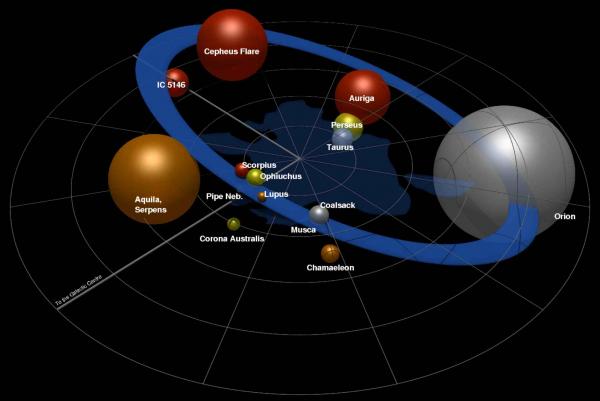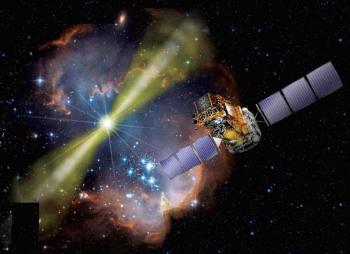Highlights 2016
Based on observations of nearby molecular clouds with the Herschel space observatory, recently large samples of future stars were detected in the form of dense cores. The properties of these compact seeds and their connection with interstellar filaments reveal us the earliest key stages of stars and the way of low-mass star formation.
Among several cloud complexes along the Gould Belt (see image below) the Aquila and Taurus regions were targeted. While the star formation in Aquila was relatively unexplored until recently, the Taurus cloud with its main filaments is well known. The Aquila Rift lies above the Galactic plane at the distance of about 260 parsec (approximately 850 light-years from the Sun). The Taurus region is more nearby, it seems to sit in the wall of the Local Bubble - a cavity, surrounding the Solar System- at 140 parsec (or 450 light-years) from us.
One instrument of the INTEGRAL satellite that continuously monitors the sky was active at the time of the discovery by the LIGO instrument of the first ever-detected gravitational wave, GW150914, resulting from the merger of two black holes. It allowed to search the existence of a high-energy source of light, associated with this exceptional event. With a detector covering almost the entire sky, INTEGRAL has concluded that, at the exact moment of the passage of gravitational waves in the Earth environment, no strong emission of gamma rays appeared. In theory, the merger of two holes is not accompanied by any light emission and this observation confirms this scenario. The capacity of the INTEGRAL satellite to detect brief and sudden events in the sky (as for its multiple detections of gamma-ray bursts) may prove very valuable to study other sources of gravitational waves such as the merger of neutrons stars or the explosions of very massive star, potential sources of both gravitational waves and gamma radiation. These results are published in the journal Astrophysical Journal Letters of March 30, 2016.


